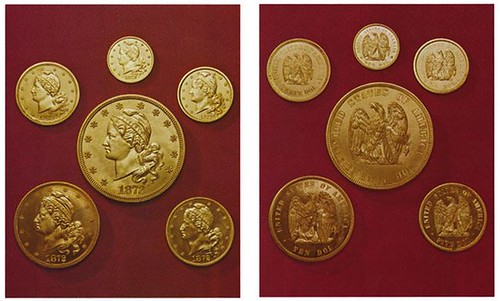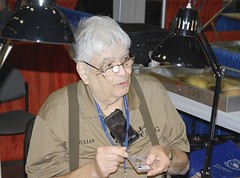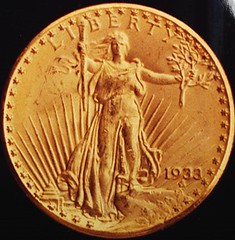
PREV ARTICLE
NEXT ARTICLE
FULL ISSUE
PREV FULL ISSUE
ANOTHER 1933 DOUBLE EAGLE SIGHTING REPORTED
Some of the best nuggets of information are buried in stories with a different headline. I almost missed the best part of a March 20,
2015 Coin World article by Paul Gilkes about professional coin dealer Julian Leidman. Here's an excerpt. -Editor
French had a national coin auction business, and he and his associate, Les Zeller, helped foster Leidman’s burgeoning numismatic interests. The Leidman family moved to the suburban Washington, D.C., area while he was in high school. In his new surroundings, he met future lifelong friend Albert L. Bonan, who had started a coin business with his father. Leidman said he eventually took over Bonanza Coins. As he extensively traveled to coin shows and auctions, Leidman said, he developed an interest in higher graded early U.S. coins and patterns. Along the way, he met Q. David Bowers, Jim Ruddy, Jerry Cohen, the Stacks (Harvey, Norman and Ben), and Lester Merkin. In the early 1970s, Leidman said, he became close with Mike Brownlee, Stan Kesselman, and Harry W. Bass Jr. In 1975, Leidman and Brownlee met with Kesselman in California to purchase a collection of Coronet and Saint-Gaudens $20 gold double eagles from noted collector R.D. “Ted” Naftzger. The collection was eventually sold to Jeff Browning, one of Brownlee’s customers. Leidman said he had been left back at the hotel while the deal was consummated, but was able to look through the coins upon Brownlee and Kesselman’s return.
In 1976, Leidman said, he was able to purchase $1 million of the Wilkison gold patterns from A-Mark, including the six-piece 1872 Amazonian gold pattern set. Leidman said he sold the Amazonian gold pattern set in 1983 in a private transaction. 
1872 Amazonian gold pattern set Leidman said upon Browning’s death, the 1933 double eagle went to a friend of his that had a minor interest in the entire collection. “It was subsequently sold in the 1980s to the anonymous collector that now owns it,” Leidman said.
The final chapter in the saga of those coins has yet to be written, but it's an interesting tale with a wide cast of characters. So
how many 1933 Double Eagle DID escape the Mint? And where are they now? I'm running out of fingers and toes to count them all on.
-Editor
To read the complete article, see:
Wayne Homren, Editor The Numismatic Bibliomania Society is a non-profit organization promoting numismatic literature. See our web site at coinbooks.org. To submit items for publication in The E-Sylum, write to the Editor at this address: whomren@gmail.com To subscribe go to: https://my.binhost.com/lists/listinfo/esylum All Rights Reserved. NBS Home Page Contact the NBS webmaster 
|

